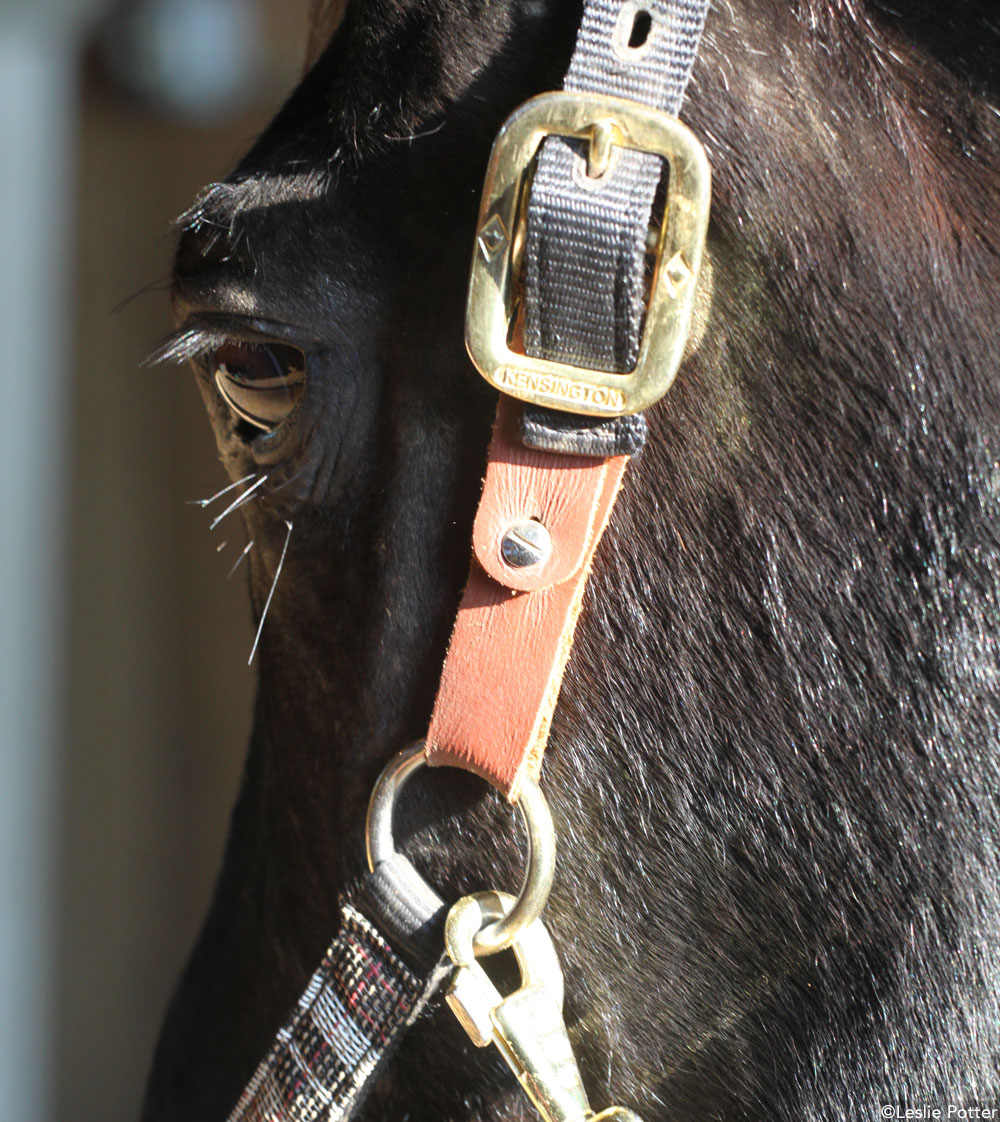
This fuse is attached by Chicago screws and is designed to break. Another design has the crown strap attached by a leather tab called a breakaway fuse. This strap is not as thick as the straps found on all-leather halters. If this strap is made of nylon, it will not break, unless extremely worn out.īreakaway halters replace the crown strap with a leather strap. When a horse pulls back, most of the pressure is put on the crown strap of the halter. Nylon has 3x the tensile strength of leather. Most halters on the market are made entirely of nylon. When a horse pulls back or panics, this leather strap (or the tab connecting it) is designed to break, releasing the horse from the halter. The crown strap comes across the top of the horse’s head. What is a Breakaway Halter?Ī breakaway halter has a leather crown strap or a leather tab connecting the crown strap. Read on to learn more about breakaway halters. However, if it is absolutely necessary, you can use a breakaway halter for increased safety in the pasture. Ideally, the best practice is to never turn your horse out wearing a halter. Halters can get caught on anything from a fence post, to a hay feeder, to even the horse’s hoof. I like to add extra security to this knot by melting the baling string into place with a lighter.Experienced horse owners will be the first to admit that halters left on horses in the pasture is an accident waiting to happen. We want this knot oriented on the outside of the halter to prevent irritation of the horse’s skin. Line up the holes and thread a piece of baling string through, then tie a knot. Step 3: Fold the end of the leather strap containing the evenly spaced holes around the halter’s ring. Step 2: Once you have cut the strap of leather to the desired length and width, poke 4 evenly spaced holes at one end and a few more at the other. Take a look around the barn for old or broken leather equipment that can be cut to the approximate size you need you might be surprised how much can be recycled! Step 1: You’ll need the following simple tools: halter, hole punch, baling string, lighter, strip of leather, heavy-duty scissors or knife. Here’s my simple, step by step process to turn a regular nylon or cotton halter into a breakaway halter.

Budget-friendly option #2 is to add a break-away component to the horse’s existing halter. This can be expensive depending on style and size. Option #1 is to acquire a halter made fully out of leather. There are two main ways to ensure your halter will breakaway. I, for one, would much rather have to deal with a broken halter than an injured horse. If we choose to leave halters on during turn-out it is essential to have some sort of breakaway mechanism. Most turn-out spaces contain a number of items that could potentially snag a halter-feeders, fencing, gates, etc. A leather strap would have broken and released pressure under the significant force of impact with the hydrant, whereas the nylon held firm. While it is true that some unfortunate accidents are going to occur no matter what, that particular foal’s death might have been avoided if it had been wearing a breakaway halter. Upon further inspection he discovered that the colt’s nylon turnout halter had become hooked around the hydrant nozzle while the weanling was running, subsequently breaking the poor horse’s neck. It appeared the poor colt had been deceased for several hours but had not yet been found due to the dense undergrowth.

As he came closer, he realized that the animal was in an abnormal position and not breathing. Next to it, was a young horse lying in the grass. Turning to look, he noticed a red-handled water hydrant with its head barely visible over the tall foliage. The grass was tall, and out of the corner of his eye he saw something dark off to his side. He was walking through a pasture to catch some broodmares for routine veterinary work. Throughout this time he visited many facilities, but one experience in particular has stuck with him. While this detail may seem trivial, it has the potential to be life altering.Ī dear friend of mine spent years working as a stable hand, and later, veterinary technician. This image seems picturesque, a common description of life at the barn, but there’s something I didn’t mention: the types of halters the horses are wearing. Lead ropes are un-clicked from halters at the paddock gate, and the horses greet each other pleasantly for turnout in the fresh dawn air. Each morning, the stable hands halter the horses individually and lead them quietly from their stalls through the sunlit barn aisle.


 0 kommentar(er)
0 kommentar(er)
